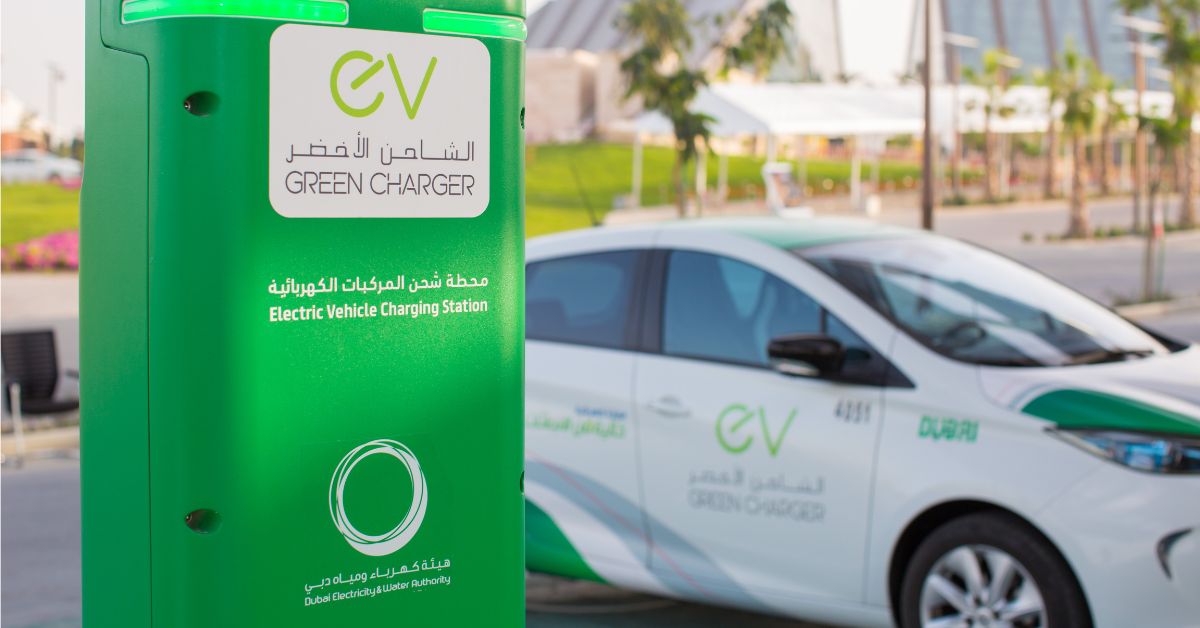As cities strive to cut carbon emissions and improve air quality, electric vehicles (EVs) are emerging as a key part of the solution. But simply replacing gas-powered cars with EVs won’t address all urban mobility challenges. According to Jamie Wylie, a consultant specializing in urban mobility interviewed by TRENDS, cities need to take a holistic approach.
Going beyond EVs
EVs are a major piece of the puzzle but so is creating a complete and integrated system of transportation.
“Without a shift to more shared and active modes of transport, cities will still face issues like congestion, which has massive economic impacts, as well as road safety issues,” Wylie said.
Cities need to carefully plan and prioritize a mix of public and shared mobility options.
“In the densest areas of the city, you don’t want to be giving all your space over to EVs,” Wylie added.
For the GCC region, which is actively investing in a sustainable future, Saudi Arabia’s NEOM project exemplifies how large-scale EV adoption can be thoughtfully integrated. By 2030, NEOM plans to be fully electric, supported by an extensive network of over 4,000 charging stations, making it a global model for sustainable mobility.
In the UAE, similar efforts are underway to balance EV adoption with broader sustainable transportation initiatives.

While such efforts need to be replicated elsewhere, cities must build the backbone of a robust charging infrastructure to harness the potential of EVs fully.
Building the backbone
One of the biggest hurdles to EV adoption is ensuring a network of accessible, reliable charging stations. According to the Global EV Outlook 2024, public charging infrastructure is expected to increase sixfold by 2035, with a focus on cities.
For Wylie, however, the real question isn’t just expanding stations; it’s making sure they work.
“Charging infrastructure needs to be expansive, cohesive, and reliable,” he said.
“If people don’t trust that they can charge whenever and wherever they need, it’s hard to convince them to switch to EVs.”
Governments often don’t have the resources to build such networks on their own. This is where the private sector comes in. “The private sector has the capacity and expertise to help roll out charging infrastructure,” says Wylie.
Partnerships with companies that have the resources to invest in EV infrastructure are key, and local governments can use incentives to encourage expansion, ensuring that EV adoption benefits all urban residents, not just those in high-demand areas.
At the same time, to ensure EVs truly contribute to a sustainable future, it is crucial to power them with clean energy.
Charging with clean energy
EVs don’t automatically mean green if the electricity is still coming from fossil fuels.
According to Wylie, renewable power, though not yet able to meet total EV demand, could help significantly at places like depots or major charging hubs, lightening the load on city power grids.
Beyond clean energy, new technologies such as “smart grids” and “vehicle-to-grid” (V2G) systems are making EVs part of the grid itself. This approach uses EVs as temporary storage, charging them during off-peak hours and feeding stored power back into the grid during peak times. Such innovations don’t just help cities manage energy better; they transform EVs into a tool for balancing the grid, expanding their role beyond mere transportation.

Besides clean energy infrastructure, cities must also prioritize accessibility and inclusivity of charging facilities.
Creating a fair and equitable EV landscape
Ensuring that EV adoption benefits everyone is vital for its success. Wylie said, “City governments can include provisions in tenders for EV charging to provide charging across the city, rather than just in high-demand areas.”
Such measures ensure that urban mobility benefits all residents, creating a fairer, more inclusive EV transition.
This emphasis on equitable access is critical in the GCC region, where projects like NEOM and BEEAH’s new battery recycling facility in Sharjah are paving the way for greener cities. Expanding access to EV infrastructure not only makes sustainable mobility possible for a wider range of people but also sets a strong example for global cities facing similar challenges.
A future powered by innovation
As cities across the globe adopt sustainable mobility solutions, EVs are undeniably a powerful force. However, as Wylie emphasized, “Technology should not be seen as the goal in and of itself. We need to think about how technology can help make efficient and sustainable transport as convenient as possible for people.”
The future of urban mobility lies in the balance between innovation and practicality—ensuring that as we build cleaner, greener cities, we keep the focus on improving everyday life. EVs are a promising piece of that vision, but it’s the bigger picture, one where EVs, public transit, and smart infrastructure all work together, that will truly transform cities into sustainable hubs for the future.








